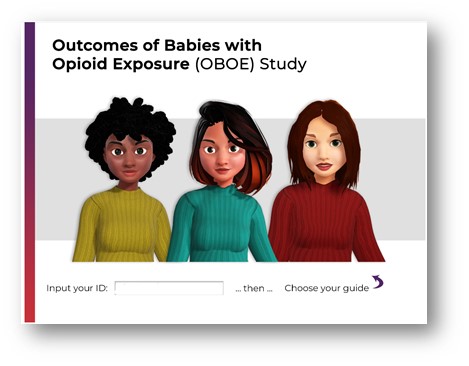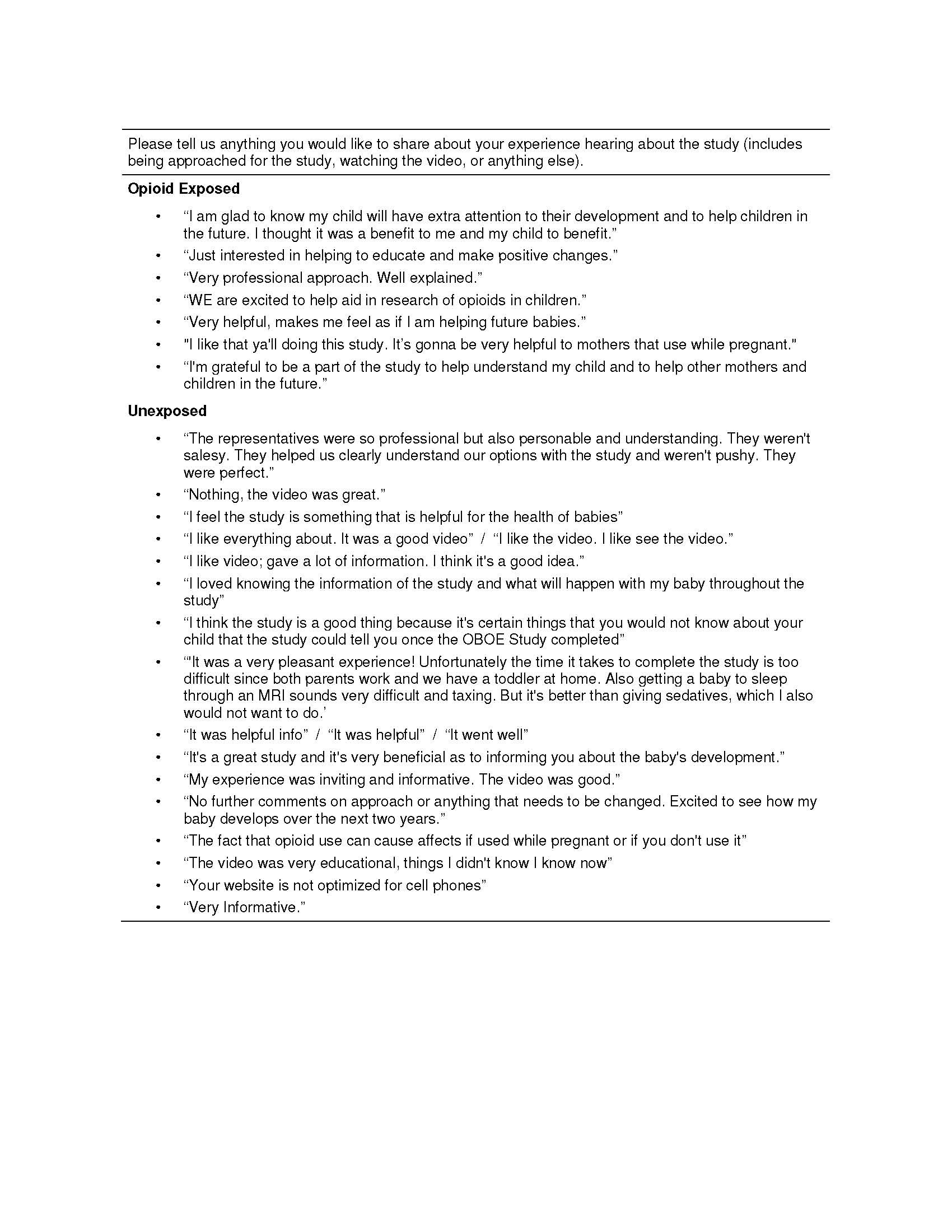Neonatal Follow-up
NICU Follow Up and Neurodevelopment 5: Impact of Parents and Social Determinants of Health
164 - Assessment of CONSENTER: a Digital Tool to Enhance Recruitment for a Prospective Longitudinal Cohort Study of Antenatal Opioid Exposure
Publication Number: 164.363

Jamie E. Newman, PhD, MPH (she/her/hers)
Senior Research Public Health Analyst
RTI International
Carrboro, North Carolina, United States
Presenting Author(s)
Background:
The Outcomes of Babies with Opioid Exposure (OBOE) Study examines the impact of antenatal opioid exposure on outcomes from birth to 2 years of age. The COVID-19 pandemic presented challenges in rapport building between study coordinators and potential participants, which impacted recruitment, particularly among control infants. To address these challenges, we adapted a digital, patient-centered, interactive tool named CONSENTER to supplement the informed consent process, improve recruitment, and enhance participant diversity.
Objective: To examine knowledge of the study, experiences with the consent process, and perceptions of the CONSENTER video in helping to inform potential participants about the study.
Design/Methods:
Analyses included 48 mothers who were given the option to view CONSENTER as a supplement to the consent process. Participants selected from racially and ethnically diverse avatars (Figure 1) to guide them through the 11-minute video with recorded voiceovers. After viewing CONSENTER, participants completed a short survey to assess their knowledge of the study, experiences with the consent process, and perceptions of the tool, regardless of their consent decision.
Results:
Overall, respondents demonstrated good understanding of the information presented with 94% correctly identifying the purpose of the study and 75% correctly indicating that their infant would not be exposed to radiation during the MRI (Table 1). Nearly all indicated they were provided “just the right amount of information” (96%) and that they understood the consent information well enough to decide whether to enroll (92%). Respondents indicated the explanation of why the study is important (35%) was what they liked most about the video. When asked what they did not like about the video, the most frequent response was “I liked watching the video – There was nothing I didn’t like about it” (75%). Open-ended responses were primarily positive (Table 2). Mothers were black, non-Hispanic (42%), black-Hispanic (4%), white, non-Hispanic (42%), white, ethnicity missing (2%), and race/ethnicity missing (10%). Of 37 respondents with race/ethnicity known, they chose avatars to guide them through the video that matched their background 46% of the time.
Conclusion(s):
The use of this interactive tool was helpful in informing prospective participants about the study. CONSENTER enhanced the informed consent process, reinforced why mothers of unexposed infants were being approached, and was particularly helpful as a resource for families to understand MRI procedures.
.jpg)

